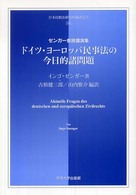Full Description
The brain is a delicate, complex, and easily disrupted organ. Unfortunately, the frequency of brain injury and the impairing effects of even seemingly minor injury is generally unknown to the public, the media, and, surprisingly, even many health professionals. It is hoped that this book will make a contribution to the welfare of brain-damaged people through a comprehensive and detailed state ment concerning their impairment and how to recognize it. Increased under standing of impairment, and the significant symptoms that reveal it, will enhance treatment planning, and aid in avoiding the error of assuming that symptoms are emotional, malingering, or exaggerations. In writing this book I have drawn on my experience in assessing individuals of all ages who have undergone traumatic brain injury, in order to alert the public, their families, concerned professionals, teaching physicians, psychologists, and attorneys to the clinical and technical issues that will aid in understanding and serving these people. Experience as a psychotherapist and career counselor offered a clinical perspective from which to document the conclusion that trau matic brain damage frequently impairs adaptive capacity of children and adults after even relatively "minor" injury.
Contents
1 The Hidden Epidemic.- 2 Neuroanatomy and Organization from a Behavioral Viewpoint.- 3 Principles of Neurobehavioral Functioning.- 4 Trauma and Brain Damage.- 5 Overview: Neurobehavioral Consequences of Brain Damage.- 6 Consciousness, Orientation, Attention, and Arousal.- 7 Integrated Sensorimotor Functions and Body Image.- 8 Neurophysiological, Humoral, and Visceral Functions.- 9 Intellectual Functioning.- 10 Memory: Short- and Long-Term.- 11 Efficiency and Control.- 12 Communications Problems-Aphasia.- 13 Cerebral Personality Disorders and Frontal Lobe Syndromes.- 14 Adaptability, Independence, and Daily Functioning.- 15 Anxiety, Stress, and Psychodynamic Reactions.- 16 Expressive Deficits: Inability to Describe Impairment.- 17 Environmental Neurotoxins.- 18 Recovery from Brain Damage.- 19 General Principles of Children's Brain Damage.- 20 Principles of the Wide-Range Neuropsychological Examination.- 21 Some Assessment Procedures.- 22 The Integrated Neuropsychological Report.- 23 Therapeutic Considerations.- References.- Appendix 1 Postaccident Intake Protocols.- Appendix 2 Some Sensorimotor Assessment Procedures.- Appendix 3 Neuropsychological Use of the Rorschach Inkblot Test: Stress-Related Response.- Appendix 4 Treatment of the Sequelae of Head Trauma Arthur Greenspan, M.D..








